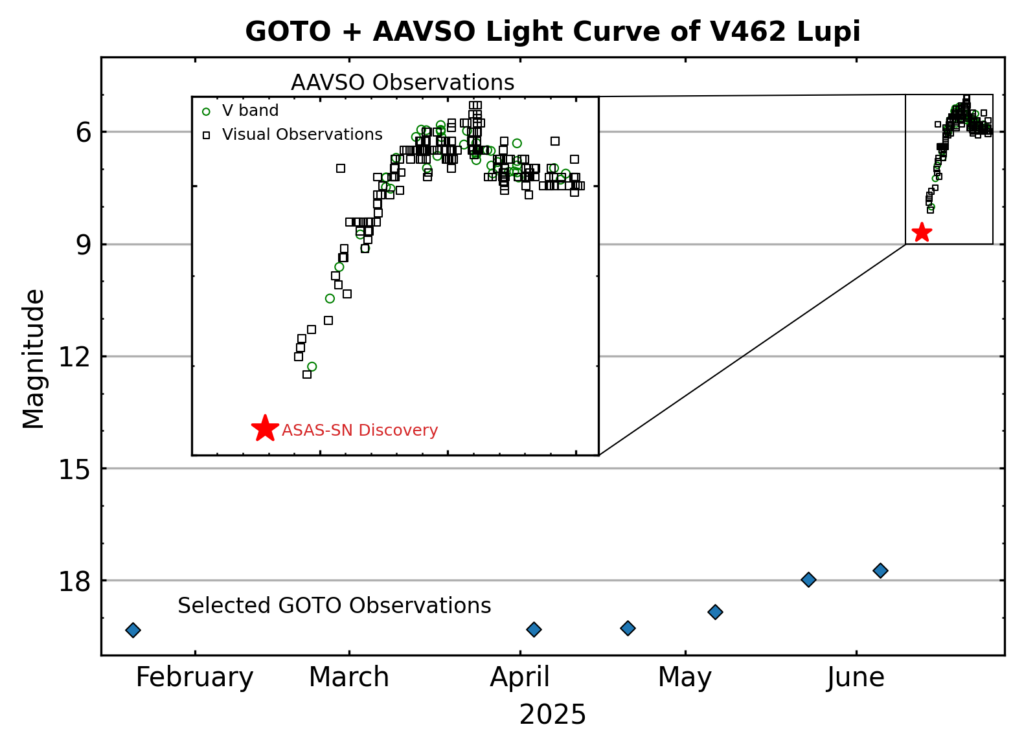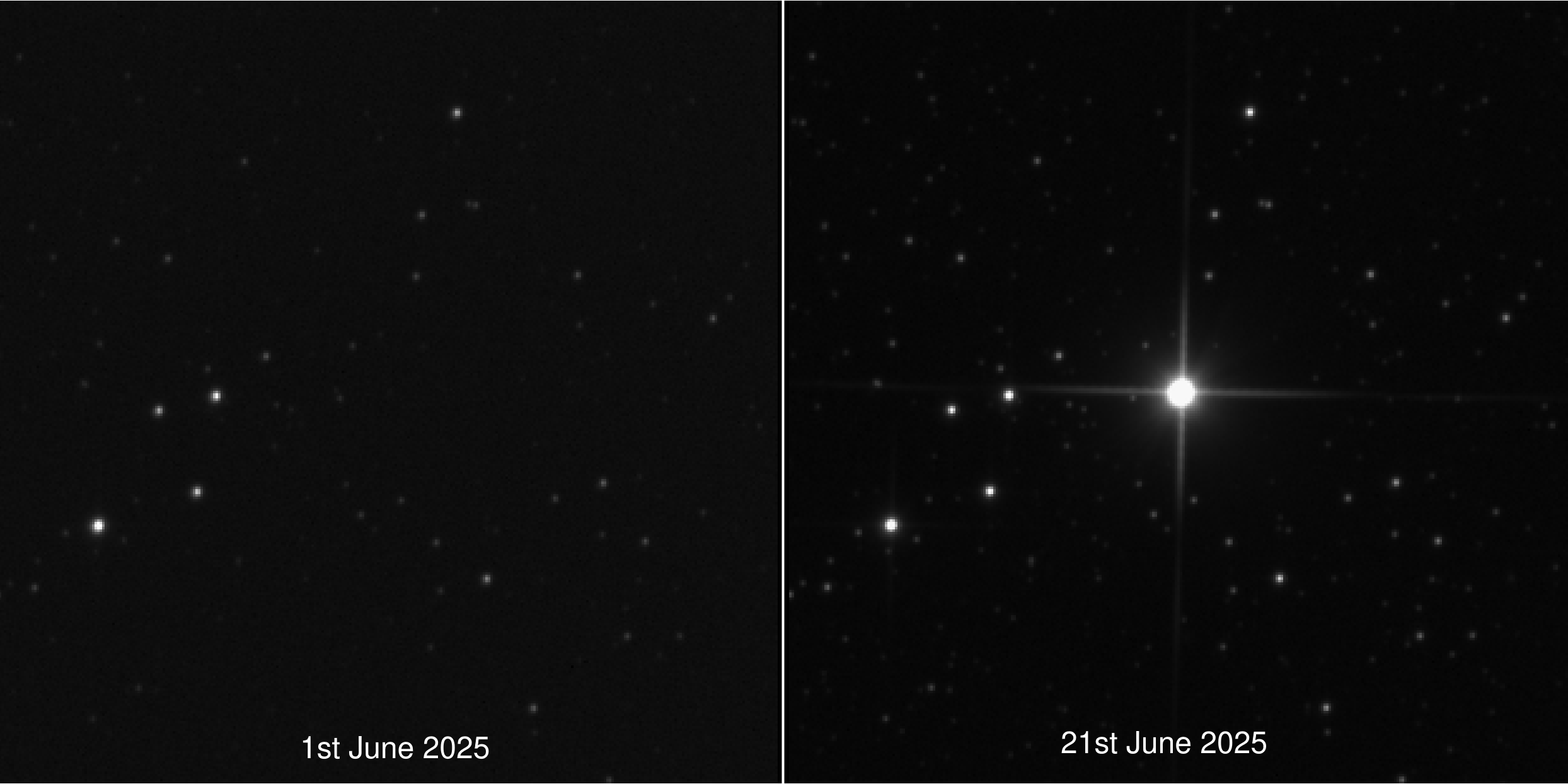A nova has been discovered within our galaxy which is briefly visible to the naked eye. Originally discovered on June 12th 2025 in the southern sky by the All Sky Automated Survey for SuperNovae (ASAS-SN), V462 Lupi quickly rose to brighter than 6th magnitude, making it visible to the unaided eye.
Classical novae are caused by runaway fusion reactions on the surface of white dwarf stars which are feeding on material from a companion star, this kind of system is called a cataclysmic variable (or CV for short). During a nova these systems can become more than 100,000 times brighter than normal. The CV responsible for V462 Lupi appeared as a faint blue star in the southern constellation of Lupus.
While novae in the Milky Way are not particularly uncommon, those which are so close to Earth and become bright enough to be visible to the unaided eye provide a rare opportunity to study them in detail. These events also are often of great interest to amateur astronomers, with hundreds of reports having been made to the American Association of Variable Star Observers (AAVSO) already.

An Astronomers Telegram has been released detailing observations made by GOTO of this system prior to its nova outburst. The precursor is visible in GOTO images as a faint star since the commissioning of GOTO-South in 2023, displaying a small amount of variability around its typical brightness around magnitude 19. Around three weeks before its discovery by ASAS-SN the system began to slowly increase in brightness, reaching magnitude 17.7 in the final observation by GOTO before the nova began.

As of publishing, V462 Lupi appears to have passed its peak brightness and began to decline. From dark skies it remains visible to the naked eye for observers from dark skies less than ~50 degrees north of the equator and will likely remain visible in binoculars and small telescopes well into July.








